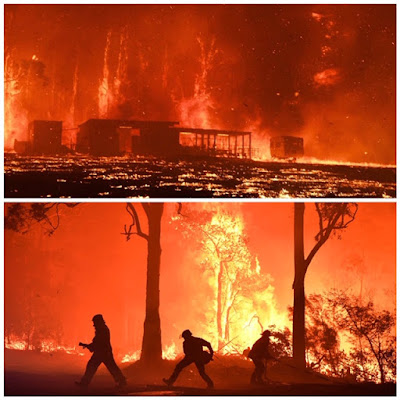According the the publicity blurb, A House Divided: The Story of Ike and McCarthy is the story of the political battle between President Dwight D. Eisenhower and Senator Joseph R. McCarthy of Wisconsin for the political leadership of the Republican Party and the moral leadership of the nation
This is about the years when the United States fell under the 'spell' of the right-wing ideologue Senator Joseph McCarthy's so called reign of terror.
It tells how President Eisenhower, although new to politics, used tactics and cunning to defeat McCarthy's irresponsible and self-aggrandizing grab for power.
A particular interesting part of the book is about the Army-McCarthy hearings which dragged on for some months threatening to destroy the US Army. Instead it ultimately led to McCarthy's downfall.
This book is concise and clearly written and, for anyone who wants a better understanding of the Cold War, is an essential read.
Recommended.
Billy Battles bequeaths his great grandson a trunk containing journals documenting his life and requests he compiles them into a 3-part trilogy of which this book is the first.
Finding Billy Battles results in a rollicking tale of the old West with gunfights and outlaws galore. Born in Kansas in 1860, a young Billy begins his adventures as a reporter on a Dodge City newspaper.
From there his exciting and dangerous life takes off across Kansas, Arizona and Texas.
This book is an amazing blend of historical fiction and fact using famous figures of the American West eg, Wyatt Earp.
I really liked this book. Its well written prose combined with the often humorous, dry and witty vernacular of the period is fun to read.
And we know from the last chapter life will not get any easier for Billy.
The second book of the Billy Battles trilogy was published in June.
It is definitely on my 'to read' list.
It's India in the 1870s and a young boy lives a quiet life in a relatively poor but vibrant river village with his loving family.
His father has a good job in a jute factory and he is getting educated.
But suddenly disaster strikes and his father is dead.
As a Hindu widow, his mother loses her status in the family the day her husband dies. She cannot remarry and is expected to live a life of penance.
As a result her son is sent off to a far away school and eventually to an English University to study law.
There he experiences the seeds of the feminist movement struggling for equal rights.
He returns to India determined to work to improve the lot of his countrywomen.
But this means living in a twilight world, being not fully accepted by his colonial masters and shunned by his fellow countrymen.
Flame Tree Road is very atmospheric drawing the reader into Hindu village life and then contrasting this with the stark reality of western civilization in Cambridge and London. It also exposes the inequality imposed on the population by the British Raj.
And there is also two love stories, one unrequited, the other bound for heartbreak.
Unreservedly recommended.
The Manhattan Project was a research and development project that produced the first nuclear weapons during World War II.
As part of that program, the US government established the town of Oak Ridge, Tennessee, to aid in the construction of the first atomic bomb.
City Behind the Fence is a social history of that town.
It is not a story of the development of the atom bomb itself but provides a detailed account of the social issues and the effects of a secret city on a person's psyche. It relates stories of human sacrifice and class as well as racial distinction while living under Big Brother's thumb in the name of national security.

The fact that the vast majority of inhabitants didn't know what was going on in the place where they lived and worked for years until news of the destruction of Hiroshima and Nagasaki was made public is testament to the atmosphere that must have pervaded the town.
A fascinating story that would appeal to those interested in a unique chapter in American social history.






























